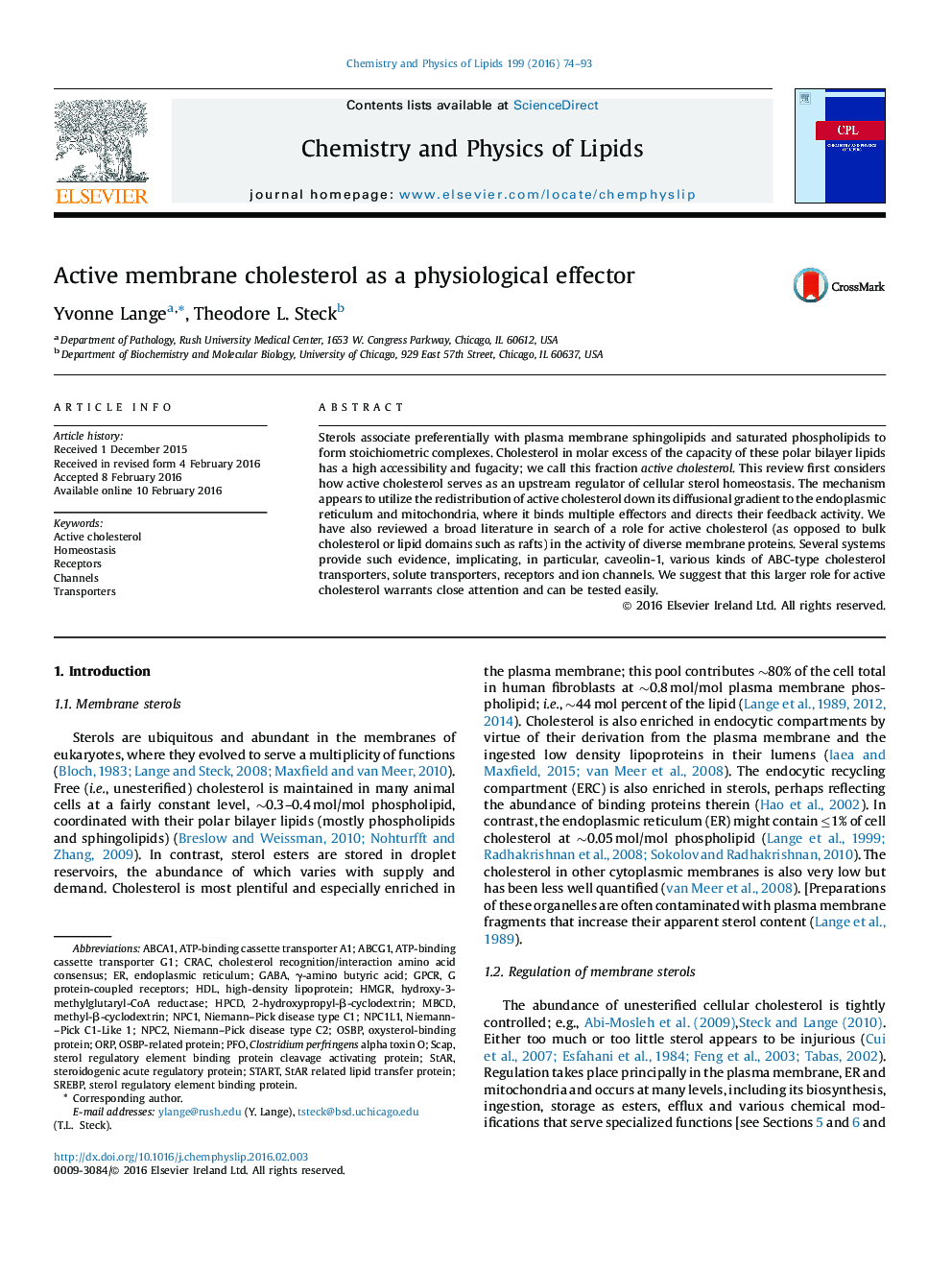| Article ID | Journal | Published Year | Pages | File Type |
|---|---|---|---|---|
| 1253192 | Chemistry and Physics of Lipids | 2016 | 20 Pages |
•Membrane sterols not complexed with polar lipids are “active” (very interactive).•Active cholesterol is a feedback signal that regulates cellular cholesterol levels.•Cholesterol interacts with a variety of transporter, channel and receptor proteins.•The function of several of these proteins responds acutely to active cholesterol.•Active cholesterol may thus be an important regulator of many cellular processes.
Sterols associate preferentially with plasma membrane sphingolipids and saturated phospholipids to form stoichiometric complexes. Cholesterol in molar excess of the capacity of these polar bilayer lipids has a high accessibility and fugacity; we call this fraction active cholesterol. This review first considers how active cholesterol serves as an upstream regulator of cellular sterol homeostasis. The mechanism appears to utilize the redistribution of active cholesterol down its diffusional gradient to the endoplasmic reticulum and mitochondria, where it binds multiple effectors and directs their feedback activity. We have also reviewed a broad literature in search of a role for active cholesterol (as opposed to bulk cholesterol or lipid domains such as rafts) in the activity of diverse membrane proteins. Several systems provide such evidence, implicating, in particular, caveolin-1, various kinds of ABC-type cholesterol transporters, solute transporters, receptors and ion channels. We suggest that this larger role for active cholesterol warrants close attention and can be tested easily.
Graphical abstractFigure optionsDownload full-size imageDownload as PowerPoint slide
